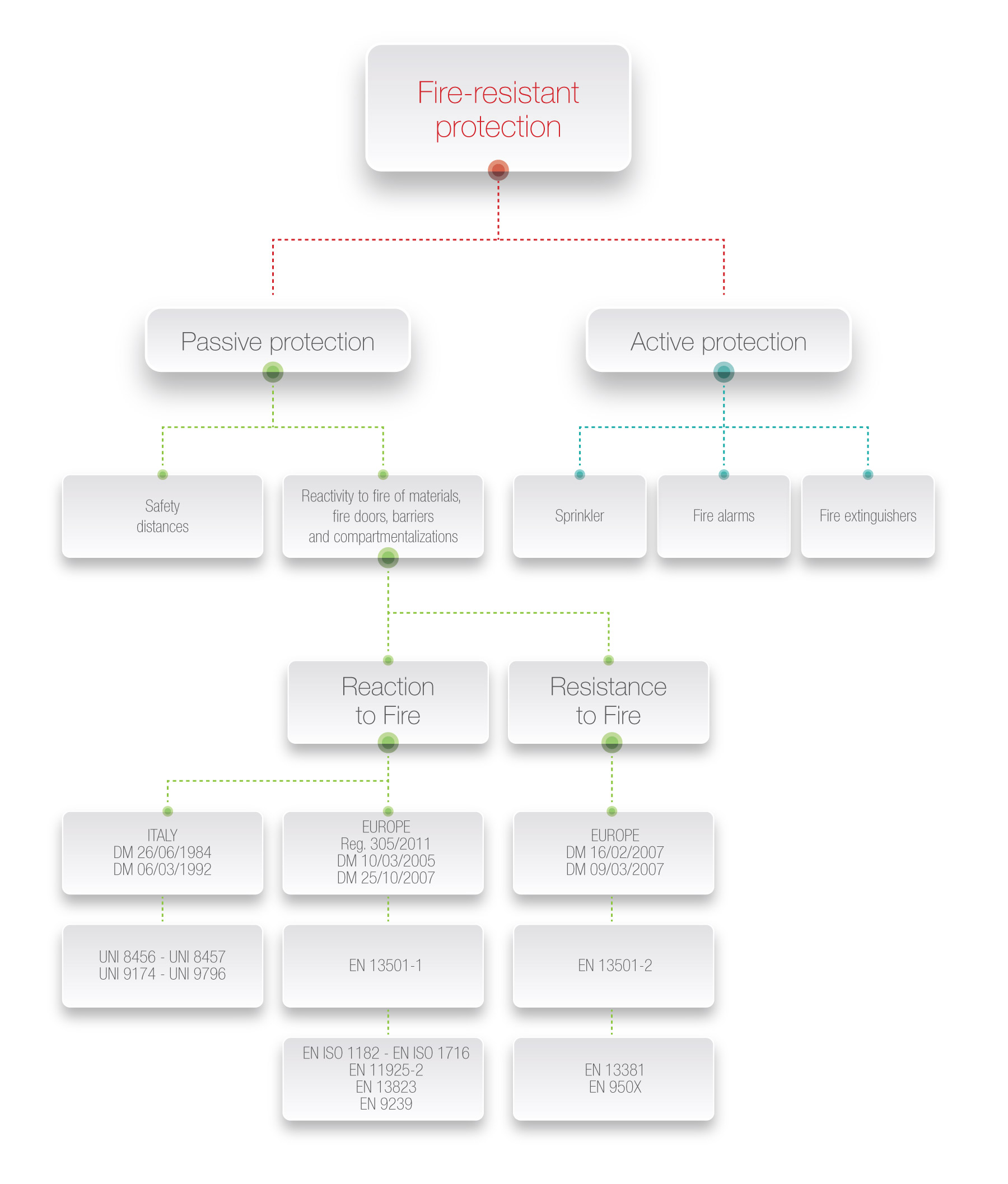The spaces concerned
by fire-resistant standards
Spaces with a big flow of people must use wooden elements treated with fire-resistant coatings.
These structures are classified as A (low risk, e.g. shop), B (medium risk, e.g. place of worship) or C (high risk, e.g. school) depending on the risk of fire and the quantity of people.
The buildings obliged to use fire-resistant coatings are
- public buildings (schools, offices, nurseries, hospitals, hospices, nursing homes, public entertainment venues, airports, railway stations, fairs, etc.)
- buildings open to the public (hotels and hospitality structures, fairs, festivals, catering facilities, offices, schools, nurseries, hospitals, hospices, nursing homes, public entertainment venues, garages, places of worship, discos and cinemas dance, fitness centers, etc.)
Classification
of the structures
The National Firefighters Corps is the body in Italy that issues the Fire Prevention Certificate (CPI). In its analysis, it identifies the risks, coming from the quantity of existing combustible material (fire load) and from the flow of people. Based on these considerations, the Firefighters classify the spaces by increasing the order of riskiness:
- A. Activities with low risk of fire, such as offices or professional studios
- B. Activities with medium risk of fire, such as furniture shops or factories
- C. Activities with high risk of fire, such as airports, hospitals, schools, large hotels
Safety
measures
After the risk assessment, designers and builders must adopt one or more measures aimed at reducing the probability of fires. These measures apply active protection and passive protection.
Active protective devices
Human intervention is required.
E.g. sprinklers, fire extinguishers, emergency exits, evacuators, smoke detectors, etc.
Passive protective devices
They are aimed at reducing the effects of fire, by slowing down the spread of fire and the development of smokes without human intervention.
E.g. fire-resistant and intumescent coatings, plasters, slabs, fire doors, etc.
A specific Class of Resistance or Reaction to Fire is required for each item made of material, classifiable as passive protection.
The Resistance to Fire is a feature of structural elements, compartments or fire doors.
The Reaction to Fire is a feature of wall coverings and furnishings.
The standards






